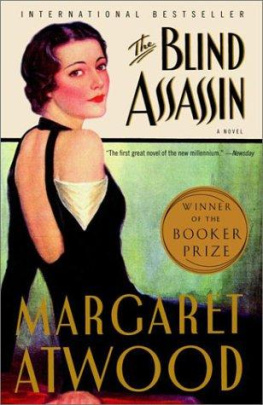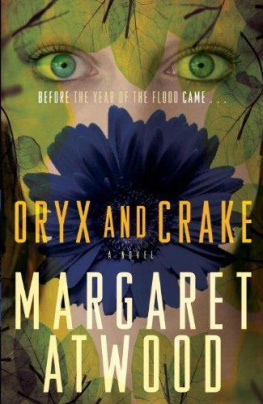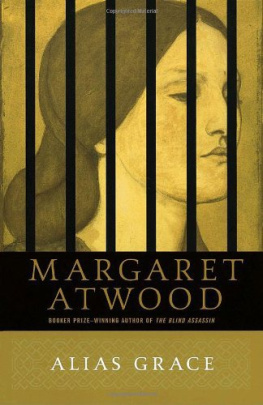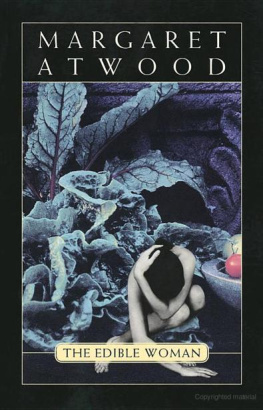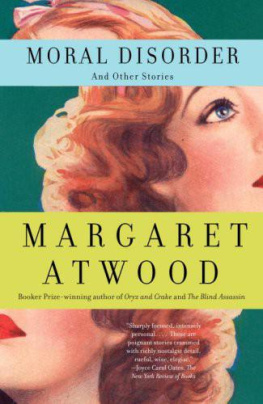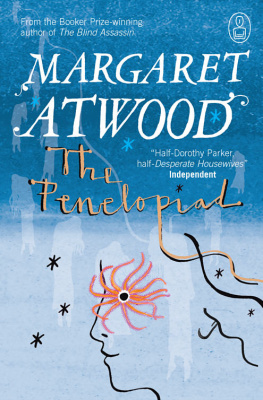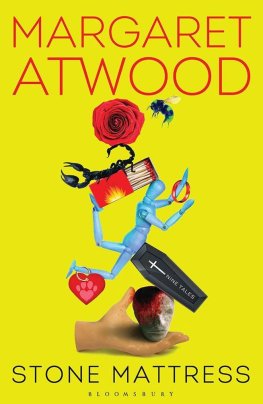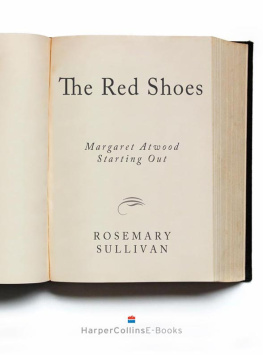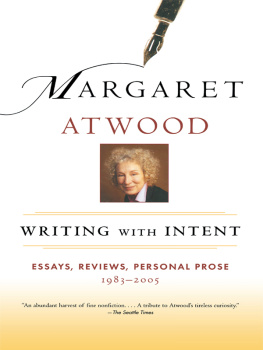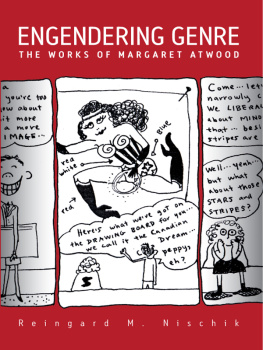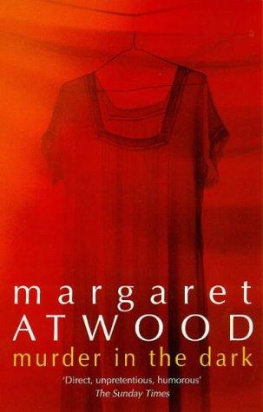the circle game
the circle game
margaret atwood
INTRODUCTION BY
Sherrill grace

Copyright 1966, 1998 by Margaret Atwood
Introduction copyright 1978, 1998 by House of Anansi Press
All rights reserved. No part of this publication may be reproduced or transmitted in any form or by any means, electronic or mechanical, including photocopying, recording, or any information storage and retrieval system, without permission in writing from the publisher.
Published by
House of Anansi Press Inc.
110 Spadina Ave., Suite 801
Toronto, ON, M5V 2K4
Tel. 416-363-4343
Fax 416-363-1017
www.anansi.ca
Distributed in Canada by
Publishers Group Canada
250A Carlton Street
Toronto, ON, M5A 2L1
Tel. 416-934-9900
Toll free order numbers:
Tel. 800-663-5714
Fax 800-565-3770
06 05 04 03 02 2 3 4 5
NATIONAL LIBRARY OF CANADA CATALOGUING IN PUBLICATION DATA
Atwood, Margaret, 1939
The circle game
Poems.
ISBN 0-88784-629-7
I. Title.
PS8501.T86C57 1998 C811.54 C98-931443-X
PR9199.3.A78C57 1998
The sequence The Circle Game first appeared as a series of lithographs by Charles Pachter. Some of the other poems first appeared in Alaska Review, The Canadian Forum, Edge, English, Evidence, Kayak, Prism International, and Queens Quarterly.
Cover Design: Bill Douglas at The Bang
Typesetting: ECW Type & Art, Oakville
Printed and Bound in Canada
We acknowledge for their financial support of our publishing program the Canada Council for the Arts, the Ontario Arts Council, and the Government of Canada through the Book Publishing Industry Development Program (BPIDP).
For J.
INTRODUCTION
by Sherrill Grace
Margaret Atwoods first major book of poetry, The Circle Game, won her the Governor Generals Award for 1966, and in many other ways announced her arrival as an important contemporary poet. The title poem first appeared in a limited folio edition in 1965, designed, illustrated, and printed by Charles Pachter. Contact Press then published the entire collection in 1966, but this edition quickly went out of print and a new one was published the following year by House of Anansi Press. In her Selected Poems (1976), Margaret Atwood included fewer than half of the poems that appear in the original Circle Game, and hence the reader of the Selected has only a limited sense of the book as a unified whole. This Anansi reprinting, then, is especially welcome, for it indicates the lasting importance of the collection and provides an opportunity to reconsider the first major work of one of our finest writers.
Upon publication, the book was generally wellreceived and most reviewers recognized the appearance of an authentic and distinctive voice. However, certain fallacies which have always plagued the understanding of Atwoods work arose in these early reviews: she was labelled an autobiographical writer in the narrowest sense and as a mythopoeic poet who followed the precepts of the so-called Frye school. Further misreading of her work was to come later with the publication of The Journals of Susanna Moodie (1970), Power Politics (1971), and Survival (1972), and her adoption by American feminists and Canadian nationalists.
If one compares Atwoods earlier poems those published in Alphabet or in her first chapbook, Double Persephone, for example with the poems in The Circle Game, one is struck by The Circle Games maturity, its new assurance of voice, form, and approach. The acerbic wit, the cool detachment, and the authority and control, now recognized as integral to the Atwood voice, are present in The Circle Game, as well as the distinctive aural-visual dynamic of the style, and Atwoods intense preoccupation with the double aspect of life. Also characteristic is the spareness of the punctuation (except for parentheses), the controlled patterning of the lines and section breaks. Thematically, Atwood here explores many of the concerns that have continued to intrigue her the traps of reality, myth, language, and the pernicious roles we play, the cage of the self, and above all, the nature of human perception.
Although one must be wary of forcing too rigid an order upon the poems, the arrangement of The Circle Game does suggest a definite pattern. The opening poems present a variety of circle games within which the speaker struggles for an escape. The growing sense of defeat and impasse climaxes in the title poem, The Circle Game, when the speaker realizes that she wants to break the circle. Several poems follow in which the speaker tries various escape-routes, until a sense of equilibrium is attained in the final three poems. This balance occurs, in part, through the development of both the readers and the speakers perception. The opening poem, This Is a Photograph of Me, challenges our perception immediately, asking us to adjust our sights, to find out where this particular voice is coming from. If we can learn how to do this, the voice promises us that eventually/you will be able to see me. The ironic double structure of this poem, its emphasis on seeing, and its sharp visual imagery urges us to rediscover our senses and our relationship with the world.
The title poem portrays the danger of misperceiving the roles we assume and the games we play in our personal relations. Images of rooms, mirrors, and circles create the sense of claustrophobic entrapment:
Being with you
here, in this room
is like groping through a mirror
whose glass has melted
to the consistency
of gelatin
You refuse to be
(and I)
an exact reflection, yet
will not walk from the glass,
be separate.
Underlying this apparent impasse is the perception that the alteration of things will be destructive for both partners: the speaker is transfixed/by your eyes/ cold blue thumbtacks. But she also knows that there is no joy in the game, and that she wants the circle/ broken, regardless of the cost.
Most of the poems in the collection focus upon the tension between opposites, whether male/female, order / chaos, day/night, rooms/open spaces, or the larger polarities of stasis and movement, self and other. Journey to the Interior explores the labyrinth of the self. It is as if the speaker in the earlier poems, having found escape from circle games impossible, has withdrawn into the self only to discover that she is enclosed in the final, most dangerous circle: it is easier for me to lose my way/forever here, than in other landscapes. The alternative is to abandon the egocentric self. In Journey to the Interior, Atwood expands the self-as-landscape metaphor, introduced in This Is a Photograph of Me and appearing again in the final poems of the book, because to see the self as other, as landscape, is a possible way out of the circle.
Another path to freedom, in Pre-Amphibian, is sleep, where one is
released
from the lucidities of day
when you are something I can
trace a line around
But this release is short-lived. We wake soon with sunlight steaming merciless on the shores of morning. In Some Objects of Wood and Stone, the speaker finds concrete comfort in physical objects, pebbles, and carvings. Through these objects, single and/solid and rounded and really / there, she is able to bypass the treachery of words and the limitations of sight. In Against Still Life, as the title implies, the speaker is determined to crack silences and force life to unfold its meaning.
Release from circle games, tentative and rudimentary though it is, occurs in the last three poems. In A Place: Fragments, the speaker realizes that meaning does exist, not in opposition to this confusion, this largeness/ and dissolving:/ but one/with it. The Explorers and The Settlers depict life pared down to the essentials of bones and salt seas. Perhaps the deaths described in The Explorers are both necessary and propitious. At least they point forward to the harmony of The Settlers, where our inarticulate/skeleton is no longer two skeletons, but intermixed and one. The speaking voice in both these poems is neither trapped within circles nor immobilized by antinomies. This voice recalls the speaker in This Is a Photograph of Me, in that it comes from beyond the circle of self and is one with the land. Consequently, the final lines of The Settlers are both beautiful and reassuring:
Next page

